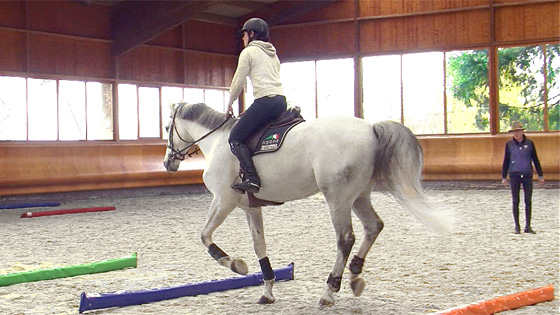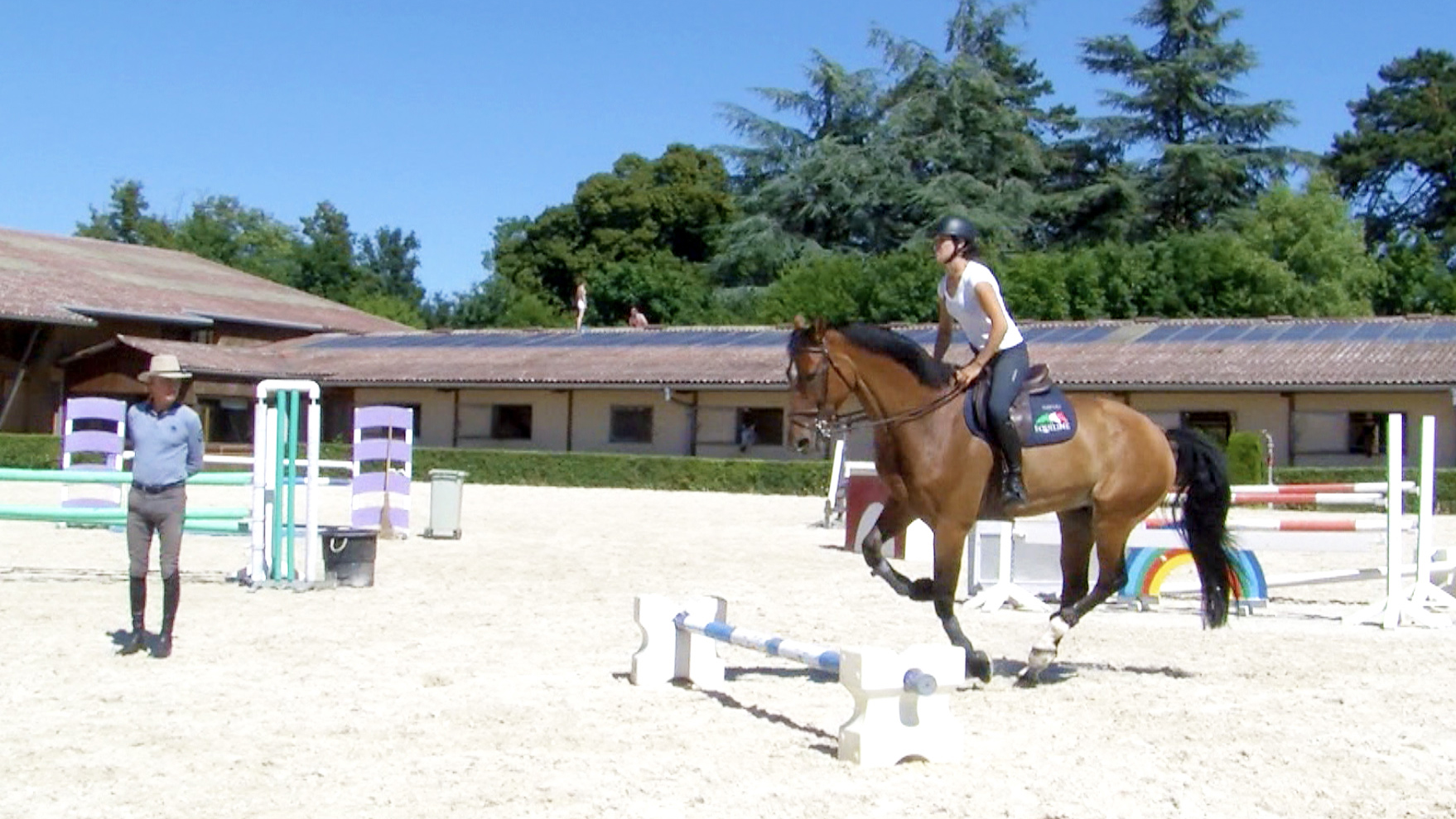Exercise to improve the horse and rider’s confidence over fences

This is the perfect grid exercise to increase the level of confidence of green horses and to improve their technique, as well as the technique and confidence of the less seasoned riders. The height and distances have been set up to approach each fence on a related distance in such a way that the rider should not have to influence the horse to get the correct spot.
This is the perfect grid exercise to increase the level of confidence of green horses and to improve their technique, as well as the technique and confidence of the less seasoned riders.
The height and distances have been set up to approach each fence on a related distance in such a way that the rider should not have to influence the horse to get the correct spot. However, the canter rhythm should be consistent, and the length of the canter stride should be adapted to the exercise well before getting into the grid. The first part of the session was to implement these conditions before training on the grid. To view this part, click here.
Nothing better than a preliminary phase of jumping small individual fences, to realise how much it helps in setting a steady canter and getting the horse to focus on the jump. It’s of upmost importance if you are training a young/green horse who needs to improve his technique and mental state over fences.
A good training for combinations
The rider must get used to keeping his horse in the “corridor,” meaning on his 4 feet and perpendicular to the obstacle to prevent any drift away from the centre. The rider has to mind his position and learn to be flexible and light in order to the follow the motion of the horse over fences.
This jumping exercise is being shown here with a young horse
We specified that the exercise is very helpful for a green or young horse or an inexperienced rider, but however, it has to be either one or the other. Either the horse or the rider has to be experienced. It is not recommended to train a green horse on this exercise with a beginner rider. Thus, if you are an inexperienced rider, it will be helpful to practise this exercise on a well-seasoned jumper. As for a green horse, it will be beneficial only if he is ridden by an advanced rider who will be able to help the horse improve in his technique and gain confidence.
In this session, Doudou, a 5 year old gelding, is trained by Lorenzo an advanced rider, used to train green horses. The couple performs well over the grid, however, Michel’s advice is shown to be very helpful to help Lorenzo in dealing with the hot temperament of his horse who is trying to rush a bit too much to the fence.
This exercise is linked to the sheet L28 of the Pocket’Jump 2









